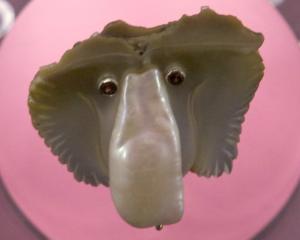
The Auckland artist has been visiting Queenstown for holidays since she was 18 and always thought her light works "should be there somewhere".
So, being invited to exhibit her works, at what Artbay gallery owner Pauline Bianchi is calling New Zealand’s first space dedicated to light works — "Lightworx" — is a great opportunity for her.
While Campbell is always grateful to have her works exhibited in galleries, she has always felt the public does not get to see her works in their best light as gallery lighting is set to display static works such as paintings, photography or sculpture.
"I’ve always felt like they have been competing with static works. They’ve never been seen in the right environment, in the right light."
While having her works exhibited at Te Papa in 2018 was a "brilliant opportunity", the work only "shone best" at night when visitors were not around. It was the same when her works were shown in shop windows.
"But in a dedicated light gallery, the light is dimmed so you can see the works how they’re meant to be. It’s like I’ve finally found family, a place I’m meant to be. It’s an amazing space."
Alongside Campbell, Wellington artists Max Patte and Tim Christie and San Francisco-based HYBYCOZO — artists Yelena Filipchuk and Serge Beaulieu — have confirmed to show at the gallery.
Campbell, who had a career in banking information technology, moved into art returning to New Zealand from Sydney and having her second child.
She was struggling with health issues — she was later diagnosed with coeliac disease — when, while studying for a visual art degree at AUT, she made her first light box , influenced by her mother’s cancer struggle.
"I found it [light] had an amazing effect on me. It filled me with joy ..."
After her diagnosis, she realised that while she could not fix her body, her mind had found a way to make her feel good.
"I really responded to the light in a visceral way."
She creates her works using opal acrylic similar to that used in commercial signage and coloured gels used in theatre and film for lighting. Then cool white LEDs are used to create the light.
"The theatre gel has a way of fusing one colour to another, creating a hazing effect in the light box. All the elements come together."
It requires a lot of experimentation to work out the best colour combinations and materials to use.
She likes to use the best products available to ensure her works stand the test of time, something that is very important to her. As is making sure the leftovers from her projects are used to create something else.
"I don’t want my works to fail. The gels are the best on the market for retaining colour. They’re designed to be used at high temperatures over theatre lights. Mine are nowhere near that temperature. In 12 years my colours haven’t degraded, even outdoors."
Campbell grew up with "old school" values: her dad was a builder, her mother a dressmaker and she had five siblings, who all learnt to make the things they wanted.
"It was that generation we grew up in."
That approach has stayed with her — when she started out she liked to use reusable or found objects in her work.
"It’s constantly using old tech with new tech; found objects with new stuff."

Bianchi, says the time is right to create a new concept for the art industry and for the local and national community.
“Sometimes it feels like things are just meant to happen, and this is the case with our new Lightworx space."
The four confirmed artists say demand for their work
is rapidly increasing, as people embrace the innovative
medium which combines technology and art, providing a multi-sensory experience.

Patte, who has been incorporating light into his practice since 2014, says working with a gallery is a new venture for his studio.
The emotional and physical response lightworks have on the viewer is a phenomenon reinforced by Christie, who says the combination of light and colour is meditative and peaceful.
“It’s not noisy, motion art. It’s escapist and really defines a space creating an ambient effect. In this sense, it offers more than a conventional piece of art. Technology is increasingly becoming part of fine artwork."
Christie, a brand designer, is new to light art having only discovered he could use his design skills to create art about four years ago. His work has developed from prints to digital light boxes. His latest works use a combination of weaving and light.
"It’s utterly unique and perfect for a cutting edge fine art gallery."












